Our lungs are so important to our body functioning that when they stop functioning properly, we begin to think about the end. Well, the end is not near if you are aware of the acupressure points for lungs that you can use to suppress any respiratory disease.
Respiratory diseases can be either acute or chronic conditions and can range from flu to emphysema. Some respiratory conditions can occur as a result of your lifestyle, the weather, or environmental conditions, while some others are genetic.
So, while you can prevent some respiratory conditions, you can’t prevent others. Respiratory issues affect the lungs and other parts of the respiratory system such as the nose, sinuses, bronchi, and diaphragm.
Traditional Chinese Medicine (TCM) practitioners refer to the lungs as a very tender organ that must not stay too dry, too moist, too cold, or too hot. These practitioners have identified acupoints for the lungs that can help protect you from respiratory conditions, or suppress them if you have them already.
I’ll be sharing these lung acupoints with you in this post so you too can use them to live a long and healthy life.
Can Acupuncture Clear Lungs?
One of the benefits of acupuncture in TCM is that it releases chemicals that can loosen up the lungs and expand your airways. So, yes, with acupuncture therapy, you can clear up your lung and breathe easily.
Recent research provides evidence to support the use of acupuncture therapy as a combinatory therapy to reduce dyspnea, a situation that involves labored breathing, in patients suffering from Chronic Obstructive Pulmonary Disease (COPD).
The research involved seventy-two patients divided into two groups – an acupuncture group, and a control group. The acupuncture group received real acupuncture treatment three times weekly for eight weeks while the control group received sham acupuncture procedures for the same period.
The result of the research was that the real acupuncture group could walk for six minutes without breathing difficulties, unlike the control group. They also had a better quality of life than the control group.
Can Acupuncture Help With Breathing Problems?

Yes, acupuncture has been found to help COPD (chronic obstructive pulmonary disease) patients breathe easier. The lung disease known as COPD covers medical conditions such as chronic lung diseases, emphysema, and chronic bronchitis. The symptoms of COPD include chronic cough and shortness of breath.
A more recent study of 68 patients with COPD showed that acupuncture therapy can improve the breathing of COPD patients. In this research, some patients got real acupuncture therapy while some got sham acupuncture therapy. After the three months of the study, those who got real acupuncture treatment were able to walk longer distances without going breathless compared to their counterparts who didn’t get the real acupuncture treatment.
The way acupuncture helps breathing problems is that it tonifies the energy (Qi) of the respiratory system. If your lung Qi is balanced, you will hardly have respiratory issues. So, acupuncture therapy boosts the flow of blood in the body which in turn expands the bronchioles and builds anti-inflammatory agents that relaxes the muscles and improve your breathing.
Where Is The Pressure Point For Lungs?

In TCM, meridians (pathways) of the body are responsible for the health and wellness of various parts of the body. Acupressure points are lined on these pathways to treat certain medical conditions or Qi imbalances through acupuncture or acupressure therapy.
For lung health as well as a functional immune system and controlled emotion, the lung meridian is in charge. When you strengthen the lung meridian, you increase the flow of blood and Qi circulation throughout the body.
Along the lung meridian, you’ll find eleven acupressure points located on the hands and arms. However, these acupressure points for the lungs on the hands are not the only acupressure points for treating respiratory problems.
You’ll also find acupressure points for the lungs on the head, neck, chest, and back. Stimulating these acupressure points, which you’ll find as you read on, is simple, safe, and convenient. What you have to do is apply pressure on these acupoints with your fingertips for one to two minutes daily.
The pressure shouldn’t be so much – it should be quite tender. Then, take full breaths that are deep slowly while stimulating these acupoints. This will help slow down your breath and relax your nerves.
Now, let me show you the acupressure points for clearing lungs, relieving asthma, healing cough, improving your breathing, and boosting the lung Qi.
Acupoints For Asthma
If your respiratory condition is Asthma, here are the acupressure points for lungs that you should stimulate:
#1. Acupoint: LU-5 (Other Names: Lung-5/Chi Ze/Cubit Marsh)
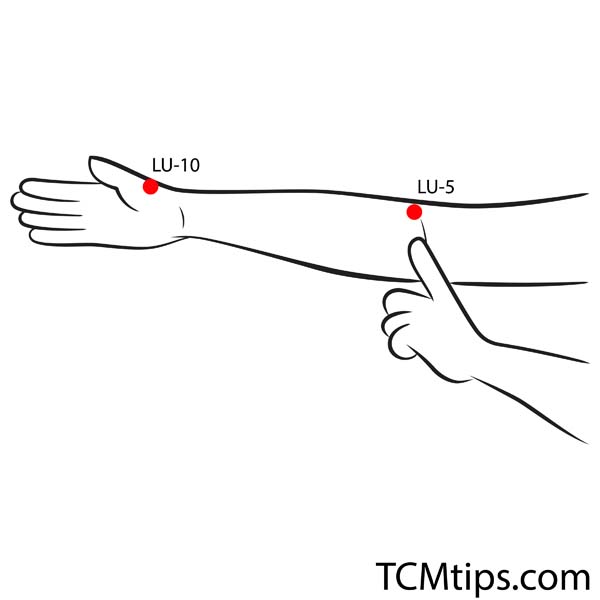
LU-5, also known as Chize in Chinese or Cubit Marsh in English is one of the pressure points to locate when you have asthma. It’s located on the elbow. You’ll easily find it by bending your elbow. It is the point, traced from your thumb, that is formed on the wrinkles on the outside of your elbow after bending your elbow.
TCM practitioners classify Chize as the He-Sea point of the Lung Meridian. This allows this acupoint to effectively clear heat from the lungs, push out phlegm from the lung, and calms the sinews.
Clinically, LU-5 can treat cough, afternoon fever, infantile convulsions, and sore throat, in addition to asthma. LU-5 is also one of the acupressure points for constipation.
#2. Acupoint: Ren-22 (Other Names: The Conception Vessel-22/Tian Tu/Heaven Projection)
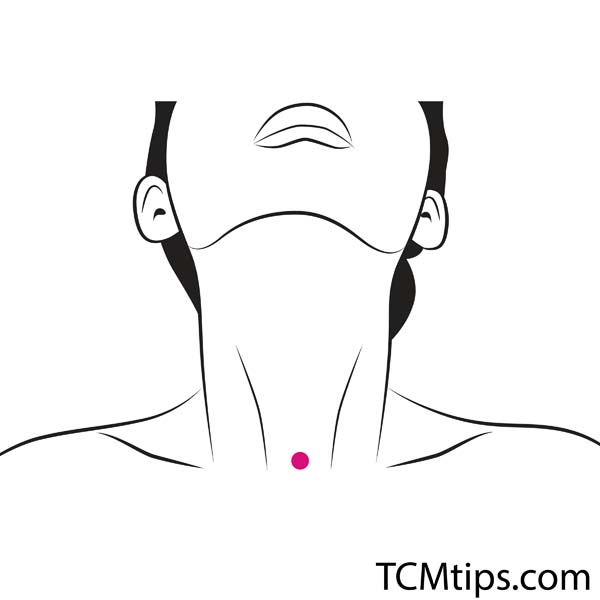
Ren-22 is another acupoint to locate in case of asthma. It is called Tiantu in Chinese, which translates to Celestial Prominence in English. This acupressure point for lung health is located on the neck. You’ll find it in the hollow where the neck ends, at the center, between the start point of the collarbones.
This acupoint packs lots of benefits to the throat while it removes phlegm and overcomes stubborn lung Qi. For this reason, Ren-22 is one of the acupressure points for hiccups as well as for cough, chest pain, sore throat, and loss of voice, in addition to treating asthma.
Acupoints For Cough
To quickly subdue cough, these are the acupressure points for lungs to stimulate:
#3. Acupoint: EM-20 (Other Names: Ding Chuan)
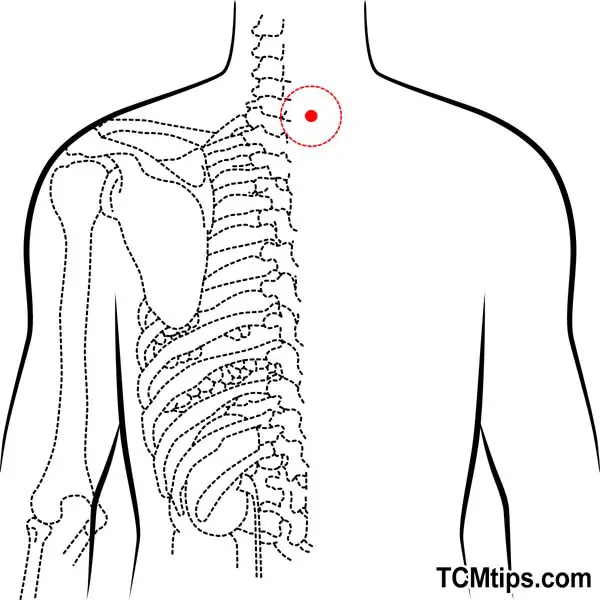
Although the English name for EM-20 is Stop Asthma, this acupoint is one of the most effective pressure points for stopping cough. It is called Dingchuan in Chinese and is located at the back of the neck. It is the point on both the left and right sides of the seventh cervical vertebra – the most prominent bone at the back of the neck when you bend your head forward.
EM-20 is the ideal acupressure point for cough, asthma, and painful shoulder as stimulating this pressure point drives off wind and harmonizes the lung Qi.
#4. Acupoint: GV-14 (Other Names: The Governing Vessel-14/Da Zhui/Great Vertebra)
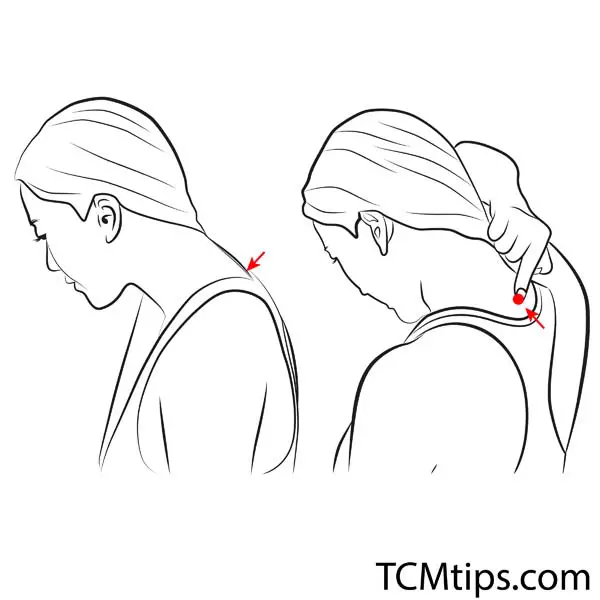
GV-14 is also known as Dazhui or Great Vertebra. It is the other most effective lung acupoint for treating cough. It is located close to EM-20. While EM-20 is located beside the 7th cervical vertebra, GV-14 is the depression below the 7th cervical vertebra that you can easily feel with your finger when you tilt your head forward.
TCM practitioners classify this acupoint as the crossing point of the Three Yang meridians of both the hand and the foot. This makes it able to clear heat, regulate Wei and Ying Qi, and treat cold. So, when you have a common cold, rigidity in your neck, and cough, GV-14 is the right acupoint to stimulate. If you want to use reflexology for arthritis like a pro, GV-14 is a useful acupoint.
Reflexology is a kind of massage you perform on the ear, hands, and feet based on the concept that these parts of the body are interconnected to certain organs and systems in the body. The science behind reflexology is not very clear but several studies show that it is effective at soothing and managing pain.
One such research is the 2014 research by trusted British physiotherapists. They found that reflexology was effective at reducing pain and helping people with chronic pain to relax.
Acupressure Points For Lungs Breathing
To ease your breathing, the following acupressure points for the lungs are vital:
#5. Acupoint: Bl-13 (Other Names: Urinary Bladder-13/Fei Shu/Lung Transporter)
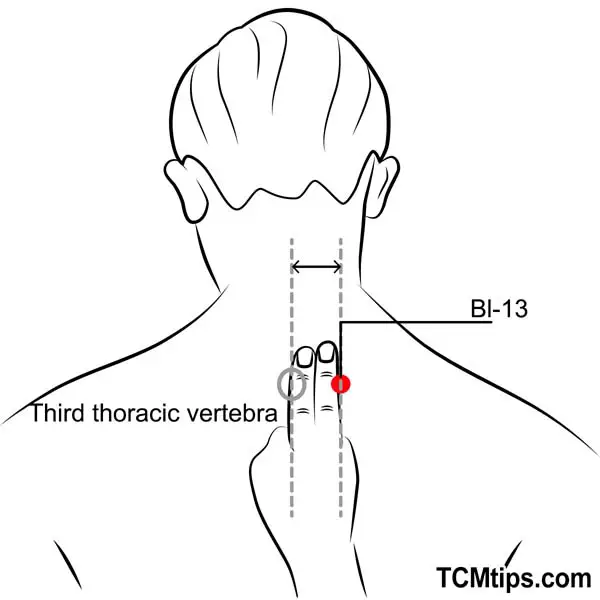
Acupoint BL-13, Feishu, or Lung Shu is the acupoint for lung you want to immediately stimulate when you have difficulty in breathing. It is located at the back, high up the scapula, at the point between the scapula and the spine on both the right and left sides of the back.
BL-13 is notable for relieving patients of fever, cough, night sweat, rashes, and soreness. It is also one of the acupressure points for bronchitis.
Research shows that Stimulating BL-13 and GV-14 helps the absorption of sinapine thiocyanate in the gel used to treat asthma.
#6. Acupoint: Ren-17 (Other Names: The Conception Vessel-17/Shan Zhong/Middle of the Chest)
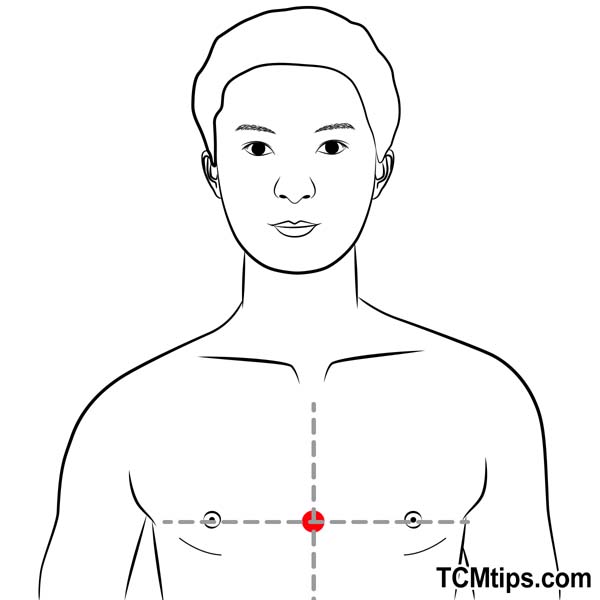
Ren-17 is also known as Tanzhong in Chinese or Chest Center in English. As the name suggests, this acupressure point for respiratory problems is located on the chest. You’ll find it on one of the bones in the center of the chest, mid-line between the left and right nipples in men.
TCM practitioners classify this acupoint as the Front-Mu point of the Pericardium, which enables it to open the chest, tonify the lung meridian, and unlock benefits to the breasts. Ren-17 is an effective acupressure point for asthma, chest pain, hiccup, and dysphagia.
Acupressure For Lung Qi
To boost your lung Qi, the acupoint you need to apply pressure on is LU-9.
#7. Acupoint: LU-9 (Other Names: Lung-9/Tai Yuan/Supreme Abyss)
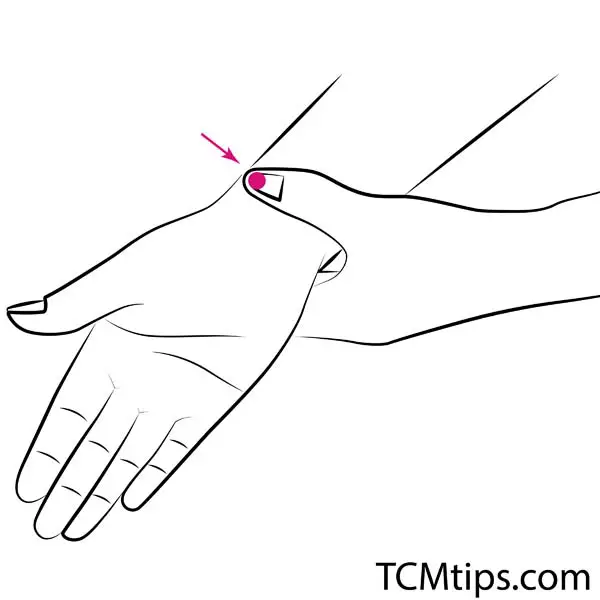
LU-9 is another lung meridian acupoint that packs a load of benefits to the lungs. It is referred to as Taiyuan in Chinese and Great Abyss in English. It is an acupressure point for lungs on hand that you can locate on the crease of your wrist, below your thumb where you can feel your artery pulsing.
TCM practitioners consider the LU-9 acupuncture point as the Yuan-source of the Lung meridian. This means that stimulating this point will stir up the vital energy of the lung meridian, making it ideal for the treatment of coughs that produces large amounts of phlegm. It is also an effective acupoint in the treatment of headaches, pain, and weakness.
Acupressure Points For Clearing The Lungs
To clear your lung to be able to breathe freely, this is the acupoint to focus on:
#8. Acupoint: LI-20 (Other Names: Large Intestine-20/Ying Xiang/Welcome Fragrance)
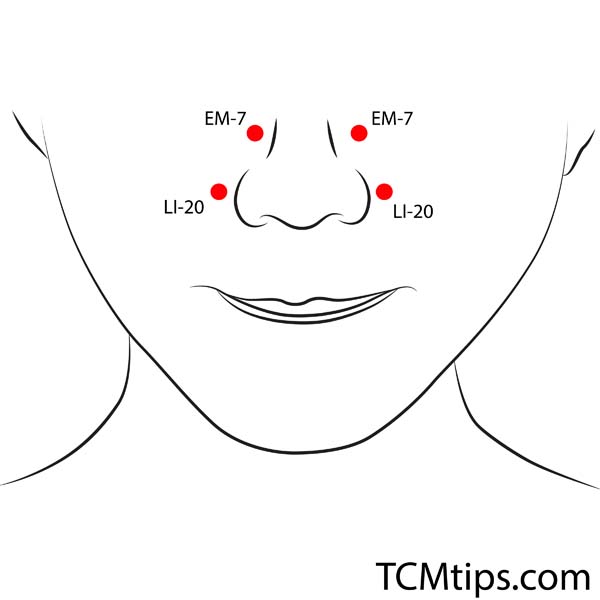
Although it is an acupoint of the liver meridian, LI-20 is the most effective acupressure point for clearing lungs. It is called Yingxiang in Chinese and Welcome Fragrance in English. It is located on the face, between each nostril, on the groove that is formed on the bottom part of the nostrils when you smile.
TCM practitioners classify LI-20 as the Crossing point of both the LI and ST meridians. This makes this acupoint able to drive away wind, free up the nasal passages, and dispel heat. Clinically, LI-20 is used to treat nasal congestion, biliary ascariasis, and any kind of itching on the face. It is also a third eye acupressure point to treat loss of taste.

Try our Anti-Aging Gua Sha Tool designed to bring out your skin’s natural glow.
Best Gua Sha Product- Anti-Aging: The tool is designed to target 11 specific aging signs such as wrinkles and sagging skin. By following the 7-step routine, users can improve skin firmness and reduce fine lines naturally.
- Enhances Skincare Routine: It works effectively with serums and lotions, boosting absorption and efficacy of skincare products.
- Visible Skin Improvement: Users can expect a smoother complexion, reduced puffiness, and a more youthful appearance.
 P. Sze
P. Sze 
















